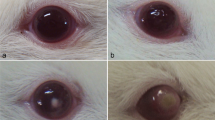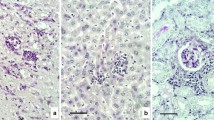Abstract.
Several representatives of the genus Acanthamoeba are known as causative agents of Acanthamoeba keratitis and granulomatous amoebic encephalitis. These occur predominantly in the immunocompromised host, but it is still unclear what primes the amoebae for pathogenicity. The aim of this study was to assess possible immunological differences between a highly pathogenic and a nonpathogenic Acanthamoeba strain. A total of 20 sera, including two sera of Acanthamoeba keratitis patients, were tested for anti-Acanthamoeba IgG, IgM, and IgA immunoreactivities using immunoblotting. All sera were positive for Acanthamoeba, revealing two predominant bands at 29 kDa and at 47 kDa, respectively. Interestingly, IgG and particularly IgA immunoreactivity enabled a clear discrimination between the pathogenic and nonpathogenic strains. Moreover, compared to the control sera, the two sera of Acanthamoeba keratitis patients showed rather weak immunoreactivities and they lacked the 29 kDa and the 47 kDa band in the IgA immunoblot against the pathogenic strain. The results of our study support the assumption that immunological predisposition might also be of importance in Acanthamoeba keratitis.
Similar content being viewed by others
Author information
Authors and Affiliations
Additional information
Electronic Publication
Rights and permissions
About this article
Cite this article
Walochnik, .J., Obwaller, .A., Haller-Schober, .EM. et al. Anti-Acanthamoeba IgG, IgM, and IgA immunoreactivities in correlation to strain pathogenicity. Parasitol Res 87, 651–656 (2001). https://doi.org/10.1007/s004360100412
Received:
Accepted:
Issue Date:
DOI: https://doi.org/10.1007/s004360100412




